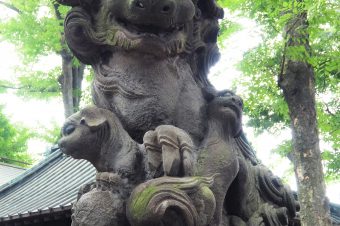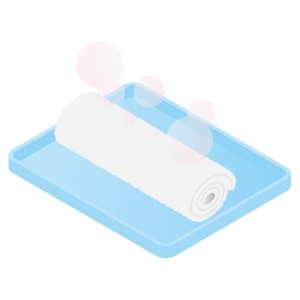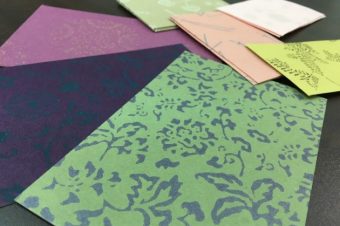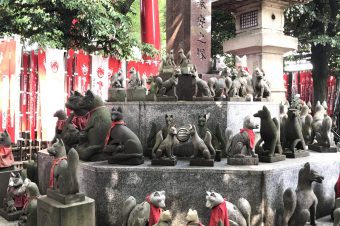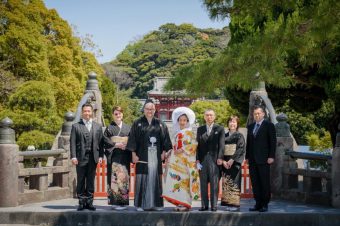Japan is unique because it respects traditional culture, yet it lets new customs develop as well. Therefore, you find new technology and traditional values coexist. This coexistence makes Japan special for foreign visitors. In the following, we are going to introduce KAMAKURA, a city which is famous for having a lot of traditional Japanese culture.
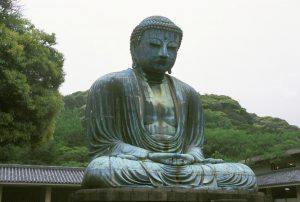 Kamakura is a picturesque seaside city located about an hour’s train ride due south of central Tokyo. While the city sees the highest number of visitors during the summer months, with people all over the Kanto Plains area coming here to enjoy the city’s three beaches, there is a constant stream of visitors throughout the year. These non-beach-bathers come to experience the history which Kamakura represents.
Kamakura is a picturesque seaside city located about an hour’s train ride due south of central Tokyo. While the city sees the highest number of visitors during the summer months, with people all over the Kanto Plains area coming here to enjoy the city’s three beaches, there is a constant stream of visitors throughout the year. These non-beach-bathers come to experience the history which Kamakura represents.
Kamakura was the seat of the Kamakura Shogunate from 1192 to 1333. This was the first time actual political power rested with a military family instead of with the Emperor (at the time based out of Kyoto). While the Kamakura Shogunate itself lasted only a little over 100 years, real political power remained in the hands of the samurai class instead of the Emperor’s Court until the Meiji Restoration of 1868.
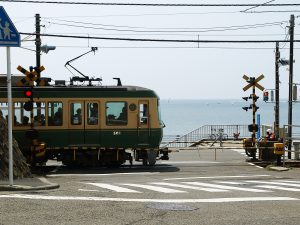
Nestled amongst verdant hills, the geography of Kamakura forms a natural fortress, which is why Lord Yoritomo Minamoto (the first Kamakura Shogun) established his government here. As such, Kamakura also boasted the first man made harbor in Japan in order to facilitate the construction of all of the buildings required for Lord Yoritomo’s capitol city, the seven narrow passes cut into the surrounding hills being designed for defense, not the transportation of goods.
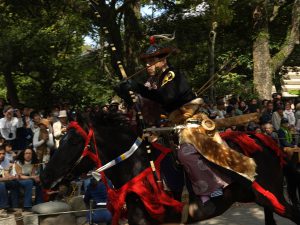
Lord Yoritomo’s legacy can still be seen today. Leading from the beach to the Tsurugaoka Hachiman Shrine (relocated to its present location by Lord Yoritomo) is a wide tree lined boulevard. This boulevard was initially constructed by Lord Yoritomo to appeal to the gods for a safe delivery of his first child, and is still called Wakamiya-Ouji (Young Prince Boulevard).
While there are some Shinto shrines here, the preeminent of which is Tsurugaoka Hachiman Shrine, most of the religious institutions in Kamakura are Buddhist temples. As samurai dealt with death on a regular basis, the afterlife was very important to them. The samurai were particularly enamored of Zen Buddhism, with its associated discipline and meditation.
From the grandeur of Tsurugaoka Hachiman Shrine and the Great Buddha to the tranquility of the “Moss Temple,” Kamakura offers a spiritual oasis where visitors can revitalize their souls.
1 Kenchoji temple

The Kencho-ji Temple is the oldest Zen training monastery in Japan, and ranks first out of five temples that are called “Kamakura’s Five Mountain Zen Temples.” This temple was built in 1253, which was the fifth year of the Kencho era, thus the name became Kencho-ji.
The Kencho-ji complex originally consisted of seven main buildings and 49 subtemples. It is hard to imagine how gigantic and incredible the property was back at this time. Unfortunately, most of these structures were destroyed by fires that occurred I the 14th and 15th centuries. Currently, the complex is made up of 10 main buildings and 10 subtemples.
The complex begins with two gates- the Somon (central gate) and the Sanmon (main gate). The Somon was moved to the Kencho-ji Temple from the Hanju Sanmai-in Temple in Kyoto. The gate is very famous as it is used as a storage place for the Imperial family tablets. The Sanmon was built by Bansetsu, who was the chief priest of Kencho-ji, in 1754. The project was funded by donations from people of the Kanto region of Japan. The gate is also nicknamed the “Tanuki Sanmon” because of a legend that says a tanuki promoted to build the gate by transforming himself into a monk.
Like most temples, the Kencho-ji also has a bonsho (temple bell). This particular bonsho was cast in 1255 and bears an inscription on it by the founder, Daikaku Zenji. Due to this fact, the bell has since been designated by the government of Japan as being a National Treasure.
The next buildings are the Butsuden and the Karamon . Both of these buildings were originally located at the Zojo-ji Temple in Tokyo. However, in 1647, they were both dedicated piece-by-piece to Kencho-ji.
The Hatto (Dharma Hall) is the largest wooden Buddhist structure in Eastern Japan. The present building dates was re-built on1814 and displays a painting on its ceiling called “Unryu-zu” which was made in honor of the 750th anniversary of Kencho-ji. This structure holds all of the major public ceremonies, however all of events are held at this building.
Just like the Somon, the Hojo was moved to Kencho-ji from the Hanju Sanmai-in Temple in Kyoto. The image of Shaka Nyorai (Shakyamuni Buddha) is enshrined in this building and the building itself is often called the Ryuo-den (Dragon King Hall).
Behind the Hojo is the one of the most beautiful gardens I’ve seen in Japan. The garden was designed by Daikaku Zenji and it can be overlooked from a porch attached to the Hojo. The garden also holds a pond called the “Sanpeki Ike.”
Past the garden is the Hanso-bo shrine. This exhibits the connection between temples and shrines, as the shrine is the guardian of Kencho-ji. While Haso-bo-shrine was originally enshrined at the Hoko-ji Temple in Shizuoka, it was moved to Kencho-ji in 1890 per the request of Zen master Ozora Kando.
Finally, there is the monastery behind a bell tower, which is strictly closed to the public. This monastery is used for the intensive training of monks in Zen meditation. The monastery consists of the Zendo (Meditation Hall), the Kaisando (Founder’s Hall), Hondo(main building), and so on.
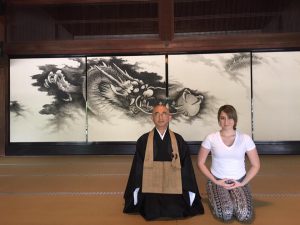 The reason I traveled to Kencho-ji Temple was to experience Rinzai Zazen. “Zazen” is Buddhist sitting meditation. When it comes to zazen, there are two different types- Soto and Rinzai. The Kencho-ji Temple was the perfect place to experience Rinzai Zazen for the first time because it was the first temple in Japan dedicated solely to the Rinzai Zen practice. The temple is also the head of the Kencho-ji branch of Rinzai Zen Buddhism, of which there are four hundred affiliated temples!
The reason I traveled to Kencho-ji Temple was to experience Rinzai Zazen. “Zazen” is Buddhist sitting meditation. When it comes to zazen, there are two different types- Soto and Rinzai. The Kencho-ji Temple was the perfect place to experience Rinzai Zazen for the first time because it was the first temple in Japan dedicated solely to the Rinzai Zen practice. The temple is also the head of the Kencho-ji branch of Rinzai Zen Buddhism, of which there are four hundred affiliated temples!
When I practiced the zazen, we used the Hojo. Everyone was asked to remove their socks and wear loose-fitting clothing. The monks explained in English how to sit, breathe, and keep our backs straight. We went through several sessions of 15 minutes at a time. At one point, we even tried walking in meditation. I found the zazen to be far more difficult than I had expected. I initially thought we would be closing out eyes, however they asked for us to keep them open and steady. Having my eyes open and focusing on my posture made it very difficult for me to relax. I gained a new respect for those who have mastered the art.
After the zazen, everyone who was in the class grouped together for tea and to discuss what we thought. Many of the people there had never tried zazen before. It was interesting to hear how everyone had different opinions and thoughts about the experience. It was discussed how zazen is drastically unique in other countries, such as Thailand or China, where the culture is different. It was explained that in Thailand, zazen is very casual and people practice it however they desire. In Japan, it is the exact opposite, with set times and strict rules. We determined that it has a great deal to do with each country’s culture and history.
Many traditional Japanese food items trace their origins to Buddhism. For example, the ubiquitous takuan, a pickled, white Oriental radish, is named after its inventor Takuan Soho, a Buddhist priest from the 16th and 17th centuries.
Kencho-ji is famed for its kenchinjiru soup. Consisting primarily of root vegetables and tofu, kenchijiru is distinguished by the fact the tofu is not cut into cubes as is usual in Japanese food items, but crumbled instead. The reason for this is quite simple. Legend has it that “way back when,” one of the Kencho-ji temple novices was preparing the soup but dropped the cut tofu while transferring it to the soup pan. He was about to throw the tofu away, when the priest overseeing food preparation said it was a waste of good food, and placed the crumbled food into the soup pan. This then became the preferred way to prepare the soup. Certainly safer, anyway, as the traditional way to cut tofu was to place it on the palm of one’s hand and push a sharp knife vertically through it (Keep in mind- tofu didn’t come in nice plastic packaging until the late 1960’s, but instead, was usually transferred by the tofu seller into a water filled pan, which the customer would bring themselves).
Important safety notice: Many stores outside Kencho-ji offer kenchinjiru soup, but most of these are modern variants, which utilize some sort of animal protein in the recipe. It is tasty, perhaps, but not authentic. Vegetarians should not assume that just because a restaurant dish is labeled kenchinjiru, that it is actually vegan.
The Kencho-ji Temple was absolutely beautiful and I really enjoyed traveling to Kamakura. Kamakura was a very small, charming town and the smell of the fresh air was a nice change from Tokyo. I feel very fortunate to have had this experience and to have been able to attempt zazen at such an important temple. I would definitely suggest to travelers to visit Kencho-ji, eat kenchinjiru soup, and try the zazen if they are able to.
2 Engakuji temple
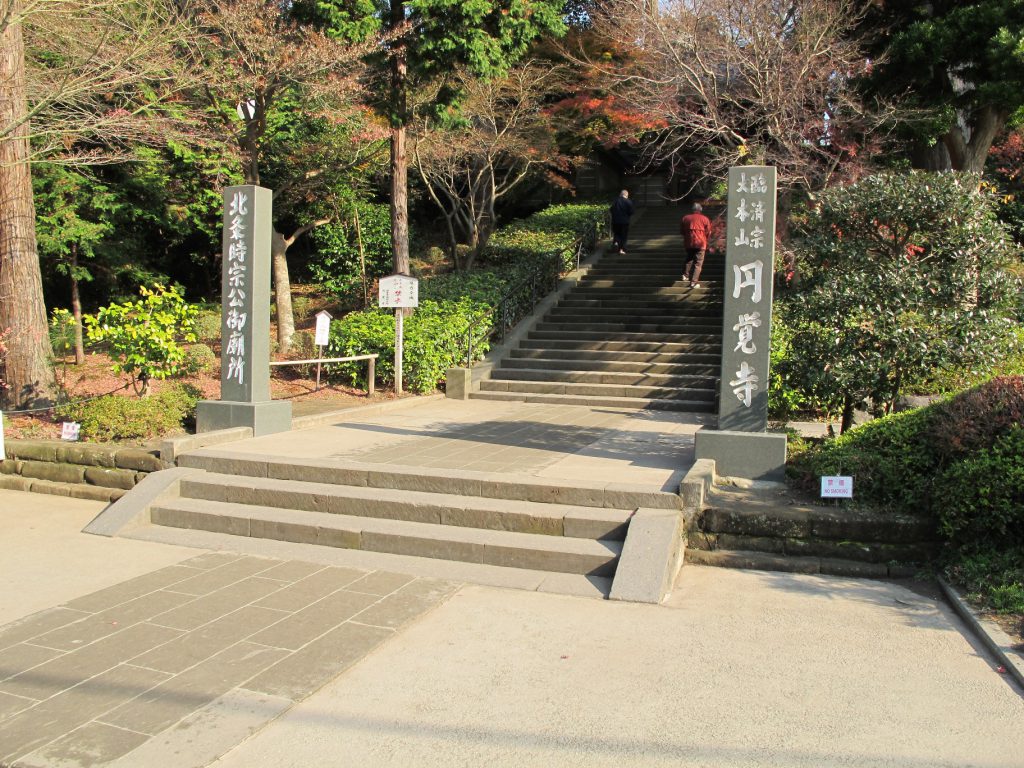
Engaku-ji, located just behind Kita Kamakura Train Station, is the second of the five great Zen Temples of Kamakura. Perhaps because it is so close to a train station, this is the first temple/shrine I’ve been to where one can use a SUICA to pay the admission fee.Tokimune Hojo founded Engaku-ji in 1282 in order to pray for the souls of the soldiers (of both sides) that were killed during the Second Mongol Invasion of Japan.
Engakuji is, in one word, HUGE! Engaku-ji boasts the largest temple bell in the city.Also, there are 18 other sub-temples within its grounds. Speaking of the grounds, Engakju represents an excellent example of the harmony possible between humans and nature. The various buildings and gardens are laid out in such a manner as to complement nature, rather than dominating it. One thing I enjoyed is that the grounds extend higher and higher up into a mountain valley, so one gets the feeling one’s spirit is ascending as well. At the furthest extent of the grounds is a garden belonging to a small sub temple, and the steps leading to it are so narrow two people can barely pass each other. Of the many structures within Engakuji, the most celebrated is the Relic Hall, known as the Shariden. It is the oldest wooden structure in Kamakura. Unfortunately, it is located in a compound where casual visitors are not allowed, so guests can only catch a partial glimpse through a roofed gate. Shariden is so closely guarded, I didn’t even know it existed until I was on a quiz program and a question about the Shariden postage stamp came up. I was in diapers at the time the stamp was issued, so I never was able to use one.
This temple offers hand-copying sutra, which is called “Shakyo” in Japanese. Sutra copying is the East Asian practice of hand-copying Buddhist sutras. You can accumulate merits by this act of word-for-word sutra transcription. Other meritorious practices included the memorization and recitation of sutras. The effort of sutra copying is considered an expression of piety, and recognized as a devotional practice, since it comprises of worship, literature, and calligraphy. Since early history, it was also common for people to sponsor monks and nuns to recite or copy sutras, thus indirectly cultivating merit in one’s ancestors, family, and oneself by transference.
The practice of sutra copying originated in China. Sutra copying was imported to Korea in the third century. During the Nara period (years 710-794) in Japan, the practice of sutra copying became very popular in their society.
You can try the method of Shakyo at some Japanese Buddhist temples. The purpose of copying sutra used to be to show deep devotion to Buddhism; however, nowadays it emphasizes the meaning of purifying oneself, both mentally and physically. We now describe the meaning of Shakyo as a way of purifying and training oneself. This experience is truly great for foreigners because they are only able to try Shakyo in Japan. Foreigners may feel that it is difficult to copy sutra because Japanese letters are so drastically different from English, but they will be instructed by a monk on how to do it properly. With this expert assistance, the task becomes far easier. We definitely recommend trying out this unique experience
See if you can find, within Engakuji’s vast expanse, the Three Happy Jizo, the Guardian deity of children and travelers. Normally Jizo statues display a somber, meditative face but these three are smiling. The Three Happy Jizo of Engakuji are said to bring about good relationships. Location clue: hillside rest house
3 Jouchiji temple
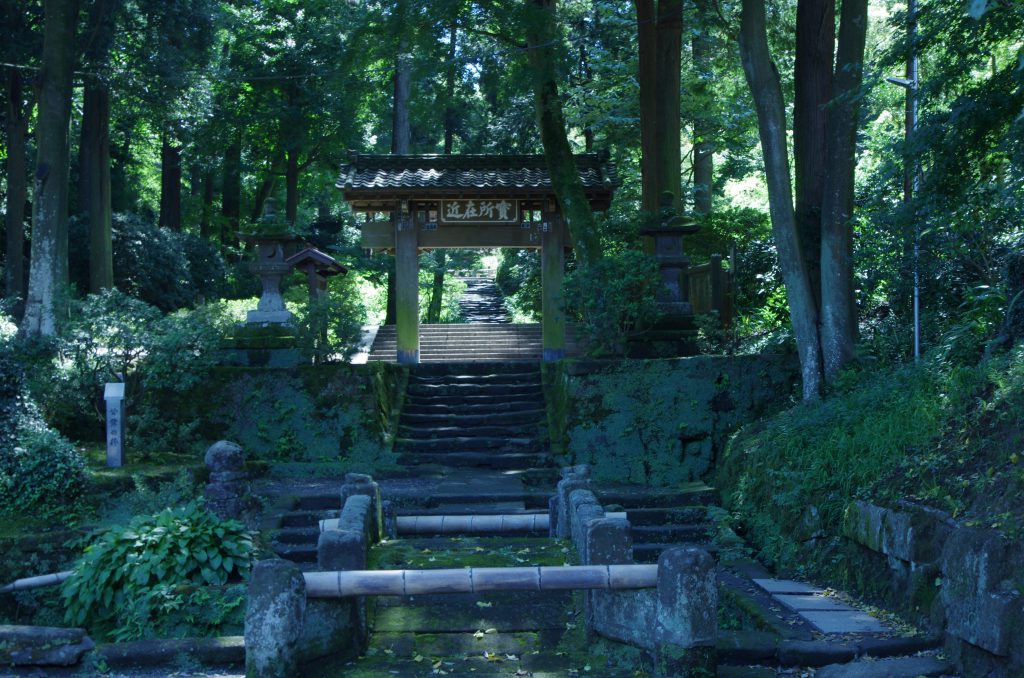
Jouchiji is the fourth of the five great Zen temples of Kamakura. Situated in a picturesque ravine off the main Kamakura-Kita Kamakura road, the temple grounds are a very lovely natural setting and well worth a visit. One can sense the air is a little different at Jouchiji and the atmosphere is comforting and nurturing. Crossing a small stone bridge, then climbing up well worn and partially moss covered steps, the first glimpse one has of the temple is its Chinese style belfry and gate. There is a beautiful garden behind the main hall, and a winding path takes you past the many tombs and caverns on the grounds. Following this path through a small cavern, one arrives at the Hotei-san statue. A jolly old man with a bald head and rounded belly, he is one of Japan’s Seven Gods of Good Fortune and is the God of Happiness. Reputedly, one can garner good luck by rubbing his belly and so the statue’s belly is rather shiny.The other notable feature of Jouchiji is the Chief Priest, Eon Asahina. He is well known to Kamakura residents as a very pleasant and down-to earth Chief Priest. I’ve known him since he and I both participated in a TV quiz show about Kamakura several years ago. Often seen riding his scooter about town, wearing an easy to recognize black helmet with a broad gold racing stripe, Asahina-san is renowned for his culinary skills. He sometimes replicates food items seen in anime movies, and even teaches a curry making class at Kamakura City Hall from time to time. He is also regularly featured on TV documentaries and travel shows featuring Kamakura. Perhaps it is only fitting a Chief Priest with his likable personality is in charge of a temple famed in part for the presence of Hotei san.
4 Hokokuji temple
 The Hokoku-ji Temple is a part of a group of Zen temples, which belong to the Kenchō-ji Temple of the Rinzai Sect. Tengan Eko established the Hokoku-ji Temple in 1334 (the first year of the Kenmu Era) to commemorate Ashikaga Ietoki, grandfather of Takauji, first of the Ashikaga Shōguns.
The Hokoku-ji Temple is a part of a group of Zen temples, which belong to the Kenchō-ji Temple of the Rinzai Sect. Tengan Eko established the Hokoku-ji Temple in 1334 (the first year of the Kenmu Era) to commemorate Ashikaga Ietoki, grandfather of Takauji, first of the Ashikaga Shōguns.
The principal image enshrined in the main hall of the temple is Shaka-nyorai-zazō (sitting Shakyamuni), which was crafted by a famous Buddhist sculptor, Takuma Hogen, and is designated as a protected cultural property by Kamakura-city. In the Kasho-do (annex), a detailed statue of the originator Butsujō Zenji (his posthumous title) is also enshrined. This statue was crafted in 1347 and is also a protected cultural property designated by Kamakura-city. Another statue enshrined here is of Kashō-Sonjazō, a disciple of Buddha. In the Kamakura Museum, many important treasures of this temple are preserved. Among them are Tōki-Shū, a wooden manuscript of Chinese poems written by the originator (the Kannon).
The Japanese Government designates the manuscript as an important cultural property, as well.
The Houkokuji Temple is also famous for a beautiful bamboo garden. If you walk through the property, you will be able to see the bamboo, which is famous for being beautiful even overseas. When you pass through the bamboo and walk along the stone path, a traditional tea ceremony “Kyukoan” appears. The tea ceremony takes place in a classic Japanese house with a unique atmosphere. You can participate in the tea ceremony for just 700 Yen which is including entrance fee. (You can enjoy Japanese green tea. If you want to know proper tea ceremony, check it out here.)
The taste of the tea, the sun shining through the thick bamboo garden, and the unique and peaceful atmosphere is incredibly relaxing and hard to find anywhere else. We suggest trying this additional experience when you visit the Hokoku-ji Temple.
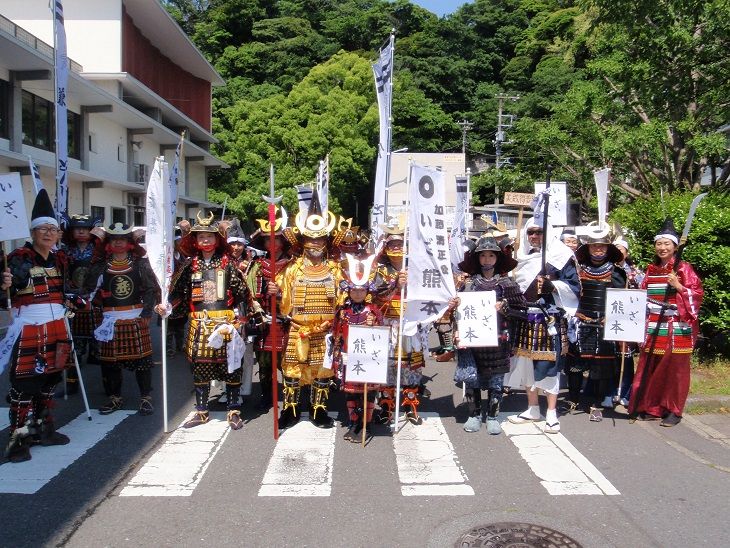
The Tonbo Group is a grassroots volunteer group. We hand craft replica samurai armor from heavy duty cardboard and enliven local Kamakura events by donning this armor and participating. Examples of such events include the Kamakura Parade, Yoshitsune Festival, and even the Yokohama Parade. We also conduct charity drives for worthy causes, such as the Great Tohoku Earthquake disaster relief and Kumamoto Castle restoration efforts.
We hold an armor making classroom every year, and each suit takes about 60-80 man hours to complete, depending upon desired intricacy.
The group “raised its battle standards” in March of 2008. We felt we were needed as Kamakura, although renowned for being the former military capitol of Japan (1192 to 1333), didn’t have any samurai participating in any of its modern day events to publicize this historical fact. As of 2016, there are approximately 40 members. Male or female, young or old, Kamakura resident or not, it doesn’t matter. All that is required to join is a passion for Japan’s samurai history.
One of the greatest benefits of joining is to fully comprehend, through hands-on experience, how and why samurai armor was constructed in such an intricate manner, be it for aesthetic and/or military reasons.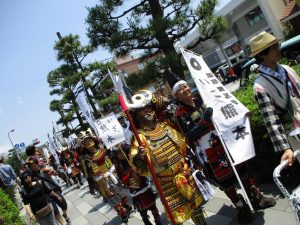
We are by no means armor making specialists, nor do we seek commercial gain. We are simply amateurs with a passion for Kamakura and its history.
Our greatest joy comes when, during the course of local events, onlookers see us in our armor and say things like, “That’s right, Kamakura used to be the military capitol of Japan.” Or “There used to be a lot of samurai living here.”
Our classes are open for viewing to the general public. The course is held from July through March, usually on the second and fourth Sundays. There is no course fee, just material costs. Should you desire to join, you don’t have to wait for the next class to start. Join midstream and you’ll be that much more prepared when the next year’s class starts. For more information, please go to the Tonbo Group’s website.
6 Jinrikisha( Rickshaw)
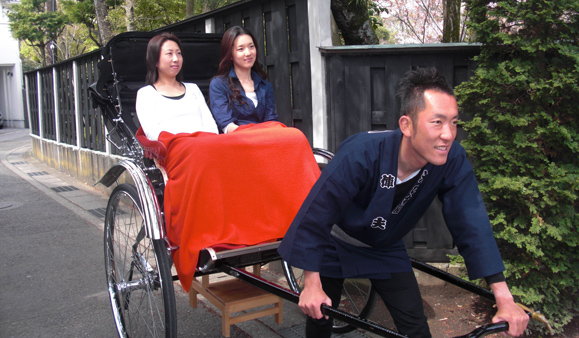
Jinrikisha(Rickshaw) is a human powered vehicle to transport people. It has been used from Meiji(1868) and Taisho(1912) era up to beginning of Showa(1926) era as a mean of transportation. Nowadays, it is used for tourist in sightseeing spots in city. Kamakura is one such place. Commonly, the jinrikisha driver is called “shafu”, he guides and gives explanations to passenger while going around famous spots in city.
Sightseeing in Kamakura is exceptional. Local people will recommend you places off the beaten track and allow you to have unusual experiences. A jinrikisha is as comfortable as you own room. It is faster than you think, and you can feel a nice breeze while the “shafu” is fast running. Should you come to Kamakura and wish to experience something unusual, you should try a ride on a jinrikisha. Of course, you can also use a taxi, but why not try a jinrikisha, a truly Japan experience giving you a life of memories?
Please click here about jinrikisha in Kamakura:Ebisuya
6 Kimono
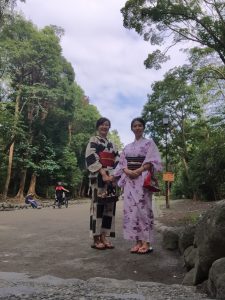
A kimono is a traditional Japanese garment that is worn on special occasions and during festivals. Wearing a kimono is very polite and formal, though they used to be worn on a more daily basis.
We recommend walking around Kamakura while wearing a Kimono. The atmosphere of the city of Kamakura is a great match for a traditional Kimono because the city has a lot of traditional Japanese places, such as temples and shrines. If you want to have a special experience, which you can only have in Japan, then this would be a great option. It would be a unique experience, which you never forget.
This place where you can try wearing a Kimono is located nearby Kamakura station. This place kimonos at reasonable price. They rent out their kimonos for just 3000yen, including the costume pieces you have to wear with kimono, such as undergarments, socks, and Japanese sandals.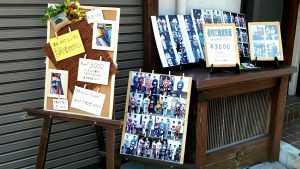
Additionally, you can leave your luggage there. If you were to pay to leave luggage elseplace, it would cost about 500~1000yen. However, if you pay 3000 yen, then you can experience exploring Kamakura while wearing a kimono and sore your luggage at the same time.
Check out their webpage if you want to try this incredible experience. You should make a reservation in advance. Komachi Kimono Saron
